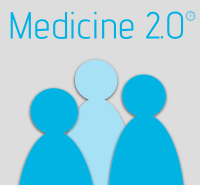To 2.0 or not to 2.0 - have junior doctors already answered the question?
|
If you are the presenter of this abstract (or if you cite this abstract in a talk or on a poster), please show the QR code in your slide or poster (QR code contains this URL). |
Abstract
Background: Use of Web 2.0 by doctors has been demonstrated by surveys both in the UK [1] and the US [2]. Furthermore, many authors have called for a wide awareness of these technologies and further research into their use [3]. However despite this research, the surveys only indicate use over extended time frames, and we have little understanding on if and how this impacts daily clinical practice
Objective: This paper aims to determine the impact of Web 2.0 in daily clinical practice in the UK, understanding its frequency of use, both absolute and in comparison to traditional internet resources aimed at doctors
Method: A sample of 30 ST1-level (2 years post registration) UK NHS doctors across a range of specializations recorded a daily diary of internet use over a week. The sample was selected from London medical schools graduate cohort. The selection of junior doctors at the ST1 grade was deliberate, based on the fact that research has shown that use of Web 2.0 decreases with a doctor's seniority [2]. This paper seeks to provide a potential vision of how doctors will use Web 2.0 going forward through their training. Diaries were selected as a method for their effectiveness in examining use of time and collecting data from the perspective of the participant [4]. In addition, participants took a survey of attitudes to Web 2.0 technologies as completed in previous surveys [1] to determine any bias in the sample.
Results: Early results indicated that Web 2.0 tools are more widely used than other internet tools (53% of total internet use) with on average being used 2 out of every 5 days. Wikipedia was the most popular tool, representing 20% of total internet use being used by 79% of users. This was followed by Google at 15% of total internet use. 83% of respondents indicate that their use of these tools was due to being able to find relevant information more efficiently than other sources (internet resources of reference books in the ward or clinic). Significant differences in attitudes to technology between this sample and larger young doctor populations examined in other surveys could not be established.
Conclusion: A sample of 30 doctors cannot be taken as representative of the whole population of young UK doctors or UK doctors in general, but it suggests that adoption is beyond that noted by previous research. This supports the academic literature that has identified the potential of Web 2.0 resources to clinical practice [5]. Furthermore, as noted by Web 2.0 definitions, users can rapidly decide if tools are useful or not driving adoption more than organization policies or promotion of tools. Have junior doctors already answered the question, to 2.0 or not to 2.0?
Key words
Medicine 2.0, clinical practice
References
1.Sandars J, Schroter S. Web 2.0 technologies for undergraduate and postgraduate medical education: an online survey. Postgrad. Med. J. 2007;83;759-762. doi:10.1136/pgmj.2007.063123. PMID: 18057175
2.Manhattan Research, LLC. White Paper: Physicians and Web 2.0: 5 Things You Should Know about the Evolving Online Landscape for Physicians. 2007. URL: http://www.manhattanresearch.com/TTPWhitePaper.aspx on 20/1/2008
3.Potts HW. Is e-health progressing faster than e-health researchers? J Med Internet Res. 2006;8(3):e23 PMID: 17032640
4.Easterby-Smith, Thorpe, Lowe. 2002. Management research: An Introduction. Sage:London
5.McLean, R, Richards, B, Wardman, J. The effect of Web 2.0 on the future of medical practice and education: Darwikinian evolution or folksonomic revolution? MJA 2007; 187 (3): 174-177. PMID: 17680746
Objective: This paper aims to determine the impact of Web 2.0 in daily clinical practice in the UK, understanding its frequency of use, both absolute and in comparison to traditional internet resources aimed at doctors
Method: A sample of 30 ST1-level (2 years post registration) UK NHS doctors across a range of specializations recorded a daily diary of internet use over a week. The sample was selected from London medical schools graduate cohort. The selection of junior doctors at the ST1 grade was deliberate, based on the fact that research has shown that use of Web 2.0 decreases with a doctor's seniority [2]. This paper seeks to provide a potential vision of how doctors will use Web 2.0 going forward through their training. Diaries were selected as a method for their effectiveness in examining use of time and collecting data from the perspective of the participant [4]. In addition, participants took a survey of attitudes to Web 2.0 technologies as completed in previous surveys [1] to determine any bias in the sample.
Results: Early results indicated that Web 2.0 tools are more widely used than other internet tools (53% of total internet use) with on average being used 2 out of every 5 days. Wikipedia was the most popular tool, representing 20% of total internet use being used by 79% of users. This was followed by Google at 15% of total internet use. 83% of respondents indicate that their use of these tools was due to being able to find relevant information more efficiently than other sources (internet resources of reference books in the ward or clinic). Significant differences in attitudes to technology between this sample and larger young doctor populations examined in other surveys could not be established.
Conclusion: A sample of 30 doctors cannot be taken as representative of the whole population of young UK doctors or UK doctors in general, but it suggests that adoption is beyond that noted by previous research. This supports the academic literature that has identified the potential of Web 2.0 resources to clinical practice [5]. Furthermore, as noted by Web 2.0 definitions, users can rapidly decide if tools are useful or not driving adoption more than organization policies or promotion of tools. Have junior doctors already answered the question, to 2.0 or not to 2.0?
Key words
Medicine 2.0, clinical practice
References
1.Sandars J, Schroter S. Web 2.0 technologies for undergraduate and postgraduate medical education: an online survey. Postgrad. Med. J. 2007;83;759-762. doi:10.1136/pgmj.2007.063123. PMID: 18057175
2.Manhattan Research, LLC. White Paper: Physicians and Web 2.0: 5 Things You Should Know about the Evolving Online Landscape for Physicians. 2007. URL: http://www.manhattanresearch.com/TTPWhitePaper.aspx on 20/1/2008
3.Potts HW. Is e-health progressing faster than e-health researchers? J Med Internet Res. 2006;8(3):e23 PMID: 17032640
4.Easterby-Smith, Thorpe, Lowe. 2002. Management research: An Introduction. Sage:London
5.McLean, R, Richards, B, Wardman, J. The effect of Web 2.0 on the future of medical practice and education: Darwikinian evolution or folksonomic revolution? MJA 2007; 187 (3): 174-177. PMID: 17680746

Medicine 2.0® is happy to support and promote other conferences and workshops in this area. Contact us to produce, disseminate and promote your conference or workshop under this label and in this event series. In addition, we are always looking for hosts of future World Congresses. Medicine 2.0® is a registered trademark of JMIR Publications Inc., the leading academic ehealth publisher.

This work is licensed under a Creative Commons Attribution 3.0 License.



